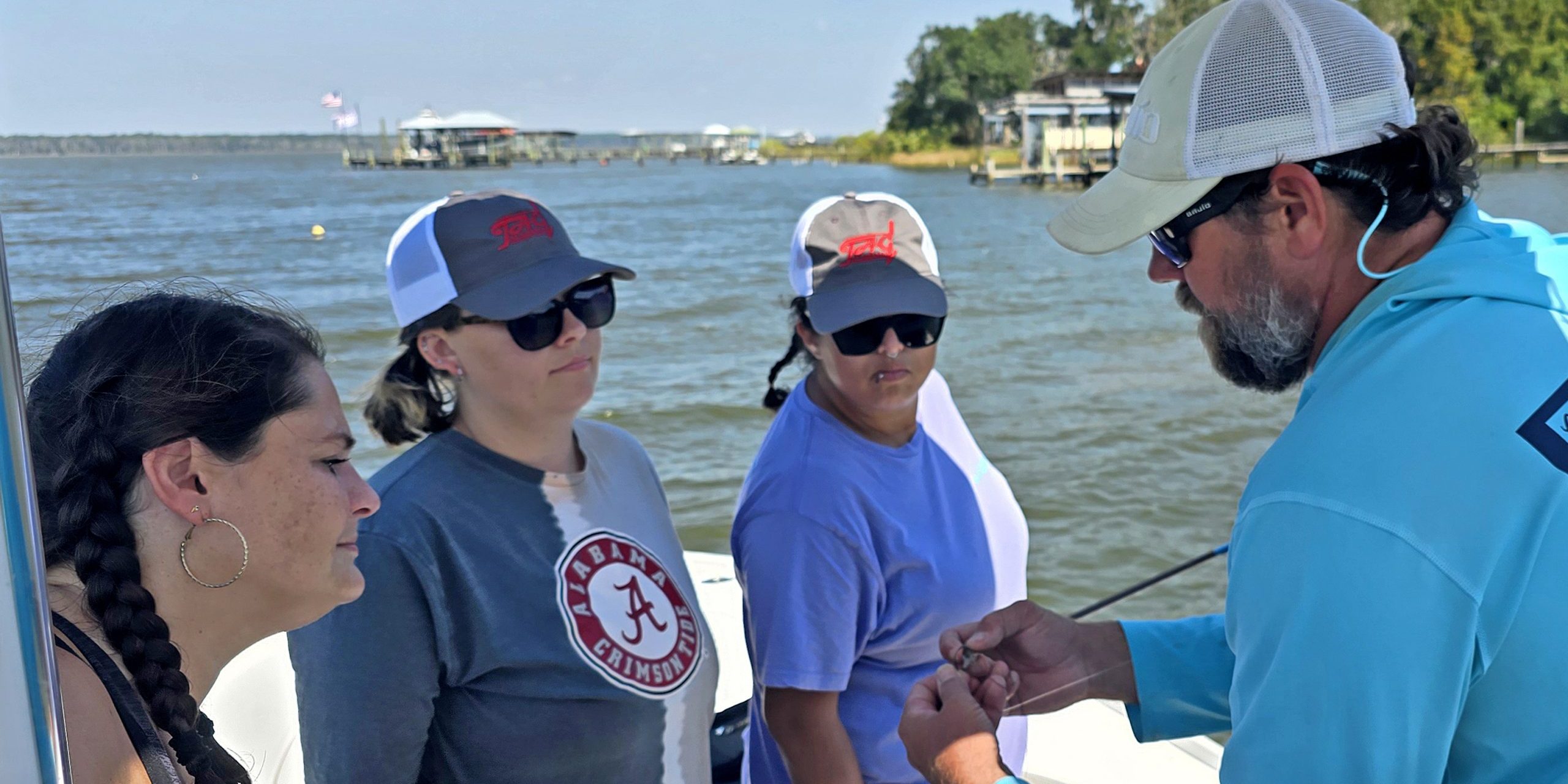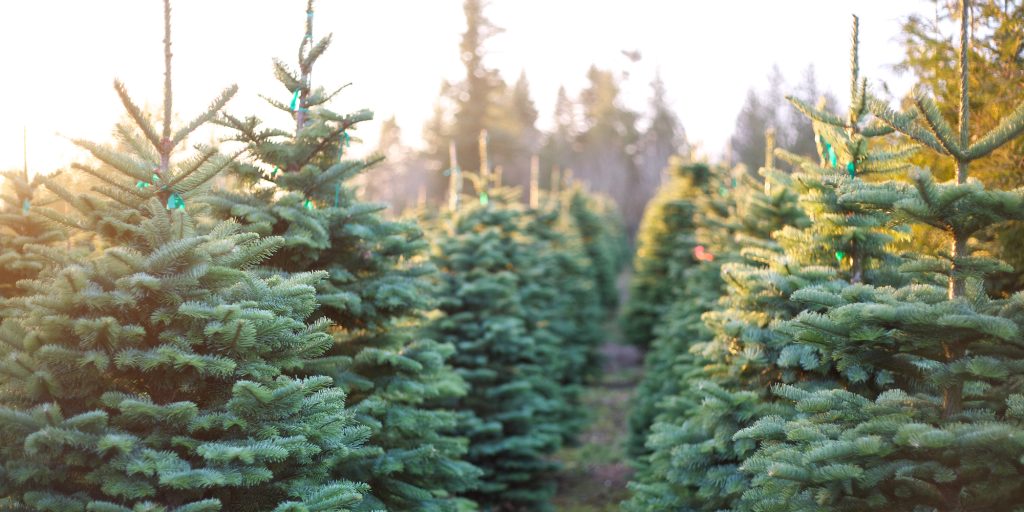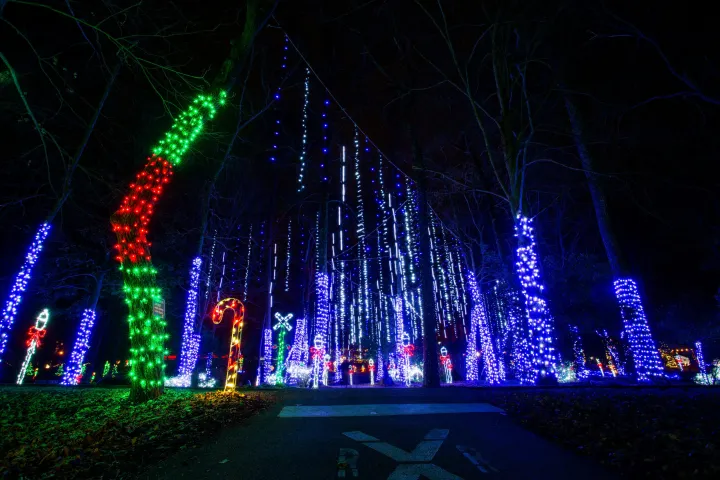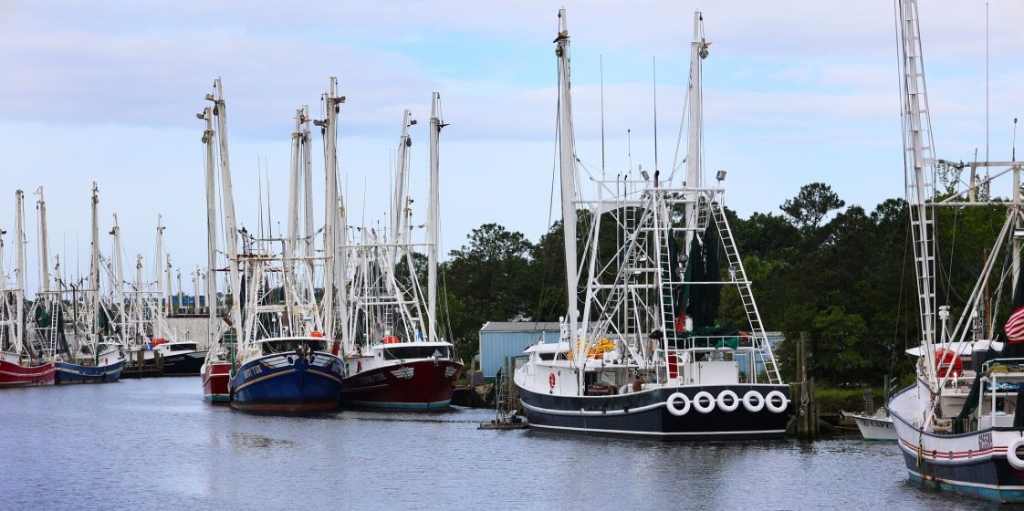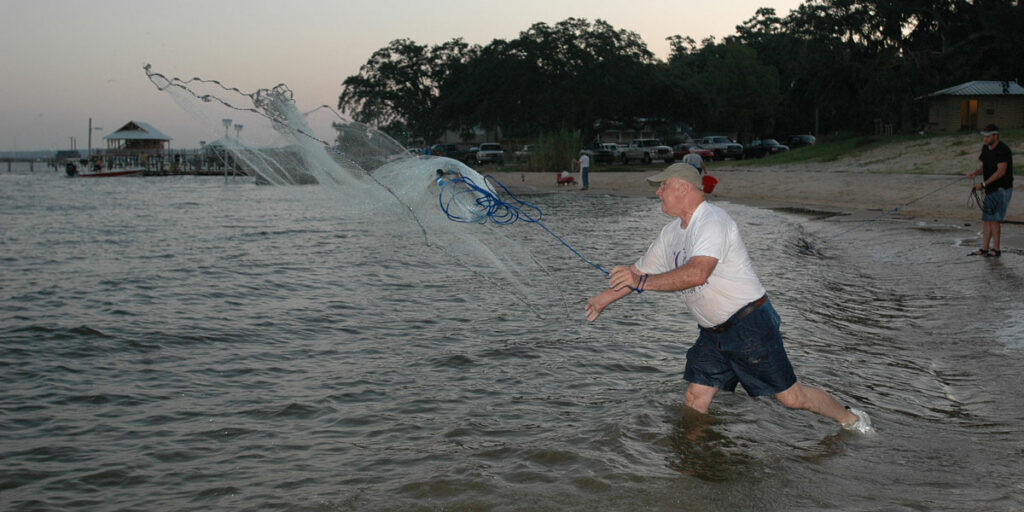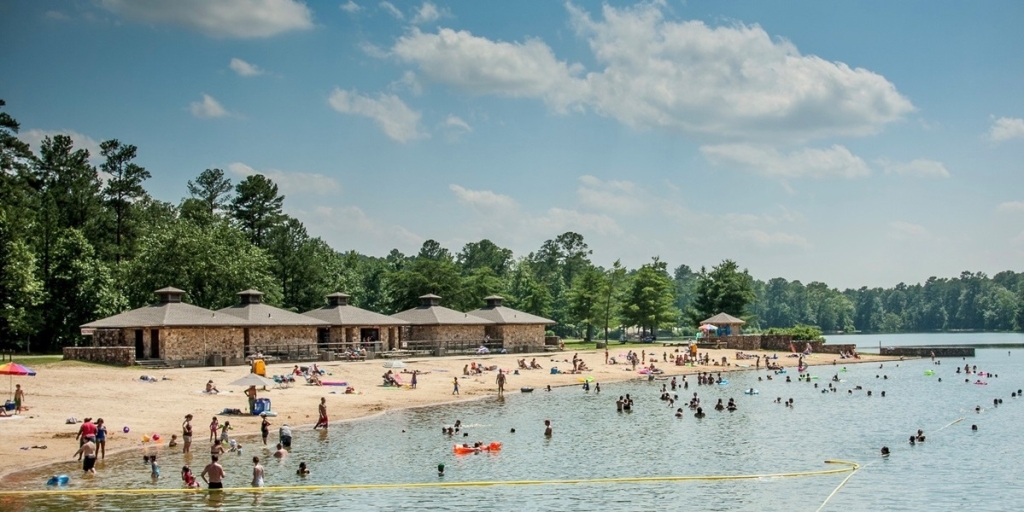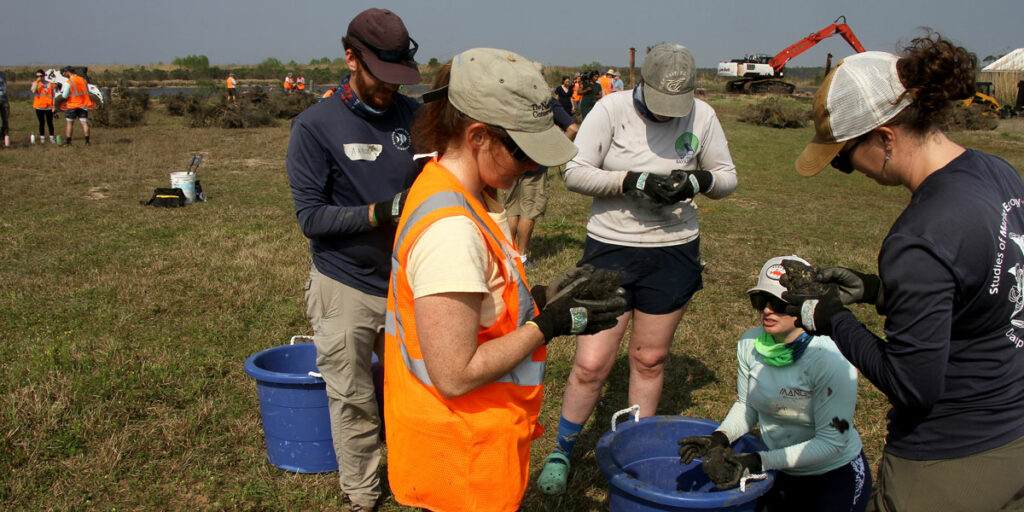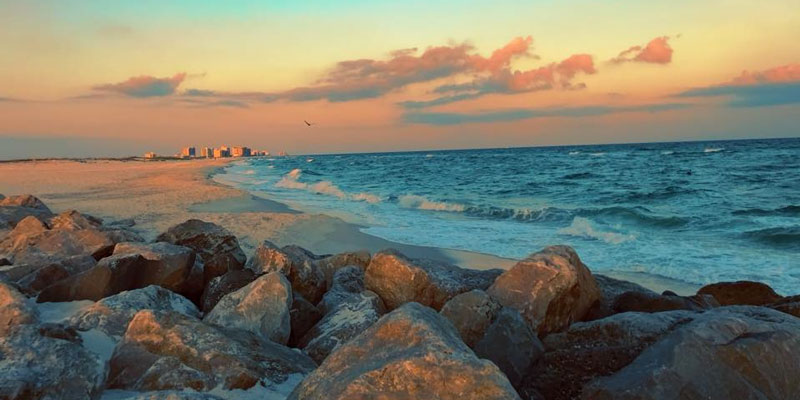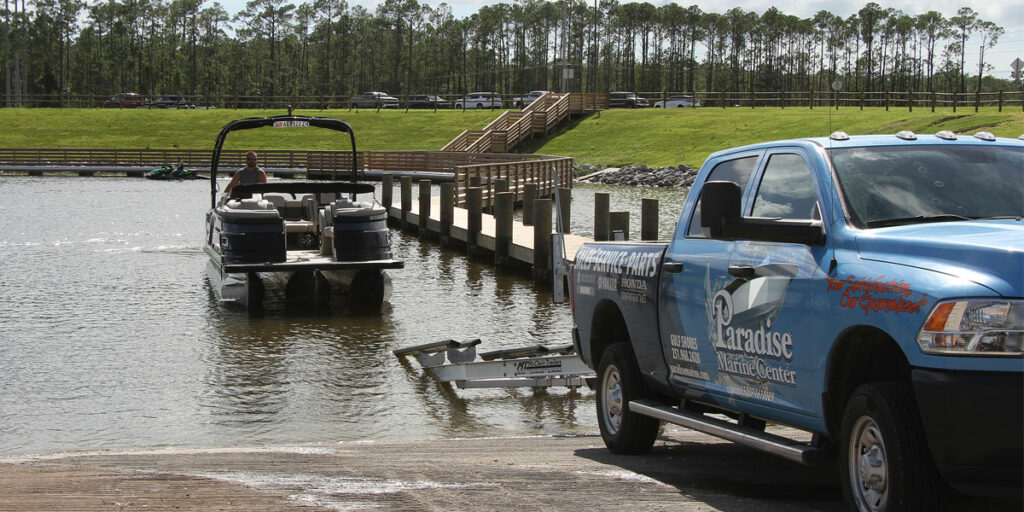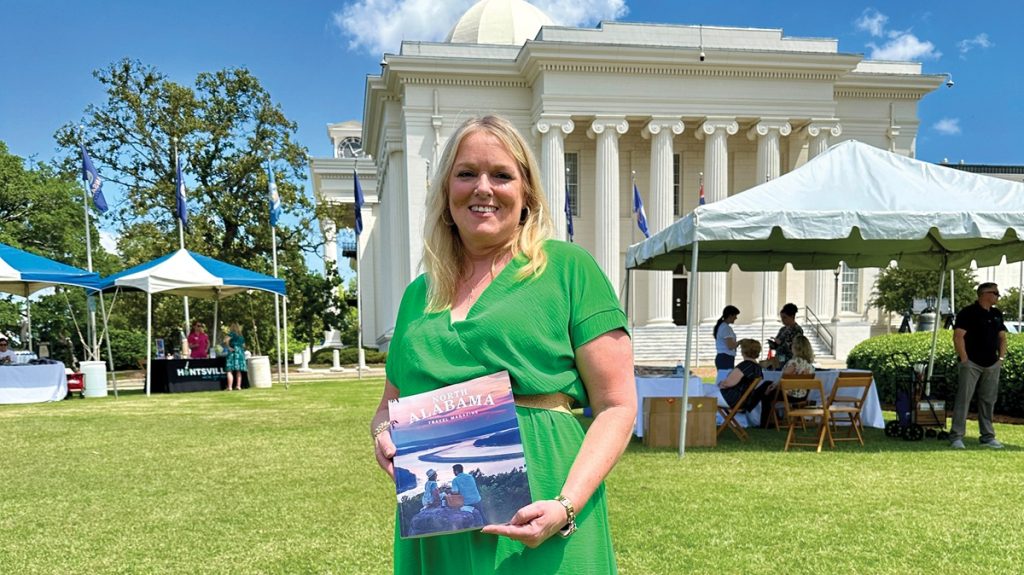Sarah Gibbs and Crystal Hightower hope last week’s Ladies Tagging Workshop at the Weeks Bay Tonsmeire Resource Center is just the beginning of a trend on the Alabama Gulf Coast of female anglers gathering on a regular basis to hone their fishing skills and connect with fellow anglers – and sometimes help with research.
Gibbs, a PhD student with Dr. Steven Scyphers in the Stokes School of Marine and Environmental Sciences at the University of South Alabama (USA), recruited Dauphin Island Sea Lab’s Hightower and charter captains Richard Rutland and Theo Atkinson, as well as the female workshop participants, to help with a research project on gray snapper, commonly known as a mangrove snapper.
“This event accomplished two goals for my research,” Gibbs said. “The first one is to tag gray snapper or mangrove snapper inshore. They are not a sportfish, but people are targeting them inshore. Their populations have increased in coastal Alabama recently. We really don’t know why or how much. By tagging them, hopefully anglers will report them, and we can get some measure of abundance or understand how many people are fishing for them and where they are going. These fish inshore are juveniles and will eventually move offshore. We are also trying to understand when they move offshore and how big and old they are.
“The second goal, which I received a grant from USA’s Gender Studies program to do, is to understand the barriers to participation that women experience in recreational fishing. We also want to see if this hands-on workshop, bringing a bunch of people together who don’t know each other but want to fish more often can help build skills, help build confidence in going out and fishing as well as helping out with some of the conservation research that we do at USA.”
A total of 19 women attended the workshop and came out for sessions in three different groups. The attendees were briefed on how to tag fish and the importance of the data retrieved from tagged fish and had a casting clinic for those who needed to brush up on their skills. Captain Rutland and Captain Atkinson then took the ladies fishing in two-hour blocks to capture and tag inshore species, especially targeting gray snapper. Alabama does have a daily bag limit of 10 gray snapper that are a minimum size of 12 inches total length. Anglers who target and retain legal gray snapper must use circle hooks and hold an Alabama Reef Fish Endorsement, available at www.outdooralabama.com.
Gibbs’ study began as separate research with the Bullard Fisheries Research Fund in 2023 and continues under an endowment fund from Coastal Conservation Association (CCA) Alabama and the USA Foundation. Her study encourages anglers who have received tags from her to tag gray snapper as small as 8 inches in total length.
“The reason I ask anglers to tag fish that size is that once those fish reach legal size, some of them will move to the lower end of Mobile Bay and then go offshore,” she said. “It’s much harder to tag them offshore.”
In addition to Gibbs’ study, Tag Alabama is a program spearheaded by CCA Alabama with support from USA and the Sea Lab.
“Tag Alabama has been going on for seven years, so we have six full years of data so far,” Gibbs said. “It’s an angler tagging project focused on redfish, speckled trout, tripletail (blackfish), and tarpon.
“We’re trying to estimate abundance and movement patterns. The ultimate goal is estimating mortality. I know 12,000 fish have been tagged since its inception. They’re also doing some acoustic tagging of redfish to get fine-scale movement.”
Gibbs said the most common areas where anglers target gray snapper include Theodore Industrial Canal, Lightning Point in the Bayou La Batre area, the Mobile River terminals in downtown Mobile in Mobile County, and Weeks Bay, Magnolia River and Perdido Pass in Baldwin County.
“They are primarily an incidental catch,” she said. “Not many people go primarily for mangroves inshore. I know some folks who fish in the Industrial Canal who are mostly subsistence fishermen. That’s their target species. But that’s not that common.”
Rutland said he guided anglers with varying experience during the event, and he thinks the tagging workshop achieved its goal.
“I had one angler who is a mate on a big sportfisher boat that goes offshore and catches blue marlin,” Rutland said. “She was telling me all kinds of blue marlin stories. I also had a lady who moved from California to Loxley this year, and she loves to fish. She had never caught a keeper-size fish, and she caught her first keeper-size fish today.
“I really enjoyed the purpose of this, which is bringing awareness to lady angling and the tagging program. I helped pioneer the tagging studies with Reid Nelson when he was a PhD student with Dr. Sean Powers at South Alabama. CCA Alabama and USA picked it up and ran with it. Now it’s one of the biggest tagging programs in the country if not the biggest.”
Hightower added that Tag Alabama also attached tags with rewards of $250 to increase the incentive to report tags.
“We put out the high-dollar tags to give us an idea of angler reporting rate,” Hightower said. “Right now, our regular reporting rate and our high-dollar-reporting rate match. That means that all of our anglers, regardless of the prize, are reporting the tagged fish. To me, that means we really have an engaged angling community, and the anglers are interested in learning about these fish with us.”
Mary Michael Walker, Assistant Director at CCA Alabama, is also a licensed fishing guide who loves to see lady anglers participate.
“Being a part of CCA and a female guide, it’s incredible to see a group of women come together and enjoy the stuff I do,” Walker said. “I think women are the fastest-growing demographic in the fishing industry. If Momma likes to fish, everybody likes to fish. If Momma can tag fish, maybe the whole family can tag fish. I think anytime we can get women together to empower one another is a great thing. We’re proud to be a part of it.”
One of the attendees, Cortney Weatherby, is originally from Nebraska but has lived in Alabama for the past three years.
“It was really cool to hear from CCA, South Alabama and Dauphin Island Sea Lab about all the research going on down here,” said Weatherby, who tagged a 21.5-inch redfish during the outing. “You hear about it a little bit, but to see it in action and find out how many agencies are looking out for the fisheries, as a conservationist, it’s great to know they’re protected for the future.”
Gibbs and Hightower hope to continue to work with female anglers although the Ladies Tagging Workshop was a one-time event.
“We had an awesome turnout,” Hightower said. “We had ladies from novice to very experienced, and I think everyone learned a lot and enjoyed a beautiful day fishing in Weeks Bay. I’m especially excited about how we can continue to learn new skills and make contacts with other ladies that love fishing as much as we do.
“We plan to host additional tagging workshops and fishing experiences. I’d like to see this happen quarterly if we have enough ladies interested. We could host some specific fishing workshops on inshore fishing, fly fishing, wade fishing, and even boater safety and trailering. The possibilities are really endless. We are so lucky to have these awesome saltwater fisheries we have in south Alabama, and we hope to share good fishing practices that promote conservation so we can continue to enjoy this resource.”
Scott Bannon, Director of the Alabama Department of Conservation and Natural Resources’ (ADCNR) Marine Resources Division (MRD), is definitely onboard with the Gibbs’ and Hightower’s efforts.
“ADCNR is always looking for opportunities to encourage participation in outdoor activities such as hunting and fishing, so I was certainly excited to hear about Sarah’s program to introduce women to saltwater fishing and tagging,” Bannon said. “Introducing them to some of the science behind the management of the resources really helps develop an appreciation for fishing. We look forward to supporting her and Crystal in future experiences.”
Gibbs said she hopes to cooperate with other groups and move the ladies’ events to other areas, like the Causeway (Battleship Parkway), Dauphin Island and western Mobile Bay.
“I’m really happy with the way the workshop turned out,” she said. “A lot of the participants are planning to go fishing together in the future. I think it’s great, and I hope it’s the first of many of these types of events.”
PHOTOS: (Hailey Smith, Crystal Hightower) PhD student Sarah Gibbs is about to release a tagged gray snapper in Alabama coastal waters. Participants at the tagging workshop leaned about the extensive research being done on saltwater species in Alabama. Captain Richard Rutland provides a bait-rigging lesson for the workshop participants.




